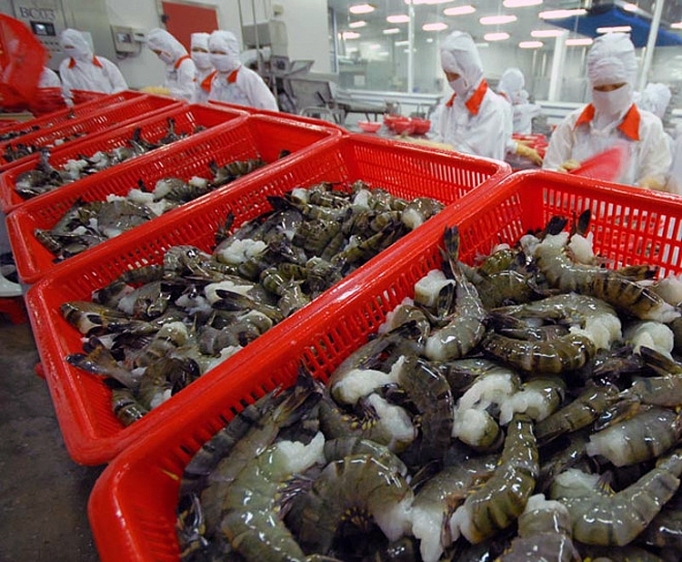RAW SHRIMP PRICES INCREASED GRADUALLY
05 Tue, 2020
After a period of decline due to the effects of the Covid-19 epidemic, from the beginning of April 2020 until now, the price of raw shrimp in the Mekong Delta is gradually increasing again, opening favorable expectations for crop production of new shrimp.

According to the Vietnam Association of Seafood Exporters and Producers (Vasep), from early April 2020 until now, the price of raw shrimp in the Mekong Delta is gradually increasing again. By the end of April 2020, the price of whiteleg shrimp of 100 pieces / kg was priced from 95,000 - 100,000 VND, compared to 3 months ago, up from 15,000 to 20,000 VND / kg. Black tiger shrimp sized 30 pieces / kg are priced from 200,000 to 230,000 VND, an increase of 30,000 - 40,000 VND / kg.

Raw shrimp prices increased gradually
The price of whiteleg shrimp in Bac Lieu is now more than VND 20,000 / kg (for small ones). Specifically, whiteleg shrimp type 100 / kg cost 90,000 VND / kg for lined pond culture; Shrimp farming in earthen ponds costs from 80,000 to 85,000 VND / kg. Types of large whiteleg shrimp increased slightly compared to before: the type 70 pieces / kg was 110,000 VND / kg; 50 pieces / kg are priced from 120,000 - 125,000 VND / kg.
Although raw shrimp prices have increased more actively, but due to the effects of drought, saltwater intrusion, shrimp disease, the complicated Covid-19 epidemic in major consumer markets, people are still hesitant to release shrimp feed.
According to Vasep, the time of the brackish shrimp crop in 2020 is still long, the favorable signs are also starting to appear more and more clear as the demand for shrimp in the world still exists because shrimp is an essential food. The control of the Covid epidemic in China and South Korea is getting better and there will be more hope for farmers and processing plants when the output is somewhat removed.
In the EU market, Vietnam has a favorable advantage from the EVFTA Agreement, which is expected to take effect in the near future, especially for shrimp products with tax rates that India, Thailand or other countries do not have an advantage of competition.
However, the potential risk factors remain. If these points are not controlled, there will be a shortage of shrimp materials when the market recovers. Processing enterprises, exporters and shrimp farmers still need to work closely to overcome difficulties and seize opportunities when the market recovers.
Source: https://congthuong.vn/
Publication date: May 13,2020
Related Post
The true fishmeal carbon footprint
The established Life Cycle Analysis (LCA) methodology to assess the fishmeal carbon footprint only accounts for the vessel fuel and post-harvest processing energy while ignoring the carbon sequestration potential of fish.
View more
Freezing Tropical Fruits: Convenient and Effective Solution with Octofrost Machines
Tropical fruits are always a great choice for providing nutrition and fresh flavor to daily meals.
View more


